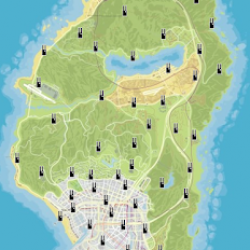Inaccurate GPS Signals: The Consequences of Jamming

The world we inhabit is heavily reliant on GPS technology. This remarkable innovation has completely transformed the aviation industry ever since its initial approval for IFR use in 1994. It has seamlessly integrated into our daily operations, serving crucial purposes such as navigation, communication, surveillance, ADS-B, and even TAWS. Undoubtedly, this technology has become an indispensable tool for ensuring our safety.
The issue at hand becomes apparent. Its functionality depends on radio signals transmitted by satellites, which can be deliberately disrupted. If you operate within the region connecting Europe and Asia, this is likely not a new revelation. However, the growing concern lies in the increasing frequency of such disruptions. According to EUROCONTROL’s recent report, incidents of GPS outages have experienced a significant surge in the past five years.

The Hot Spots
The occurrence of widespread GPS outages is predominantly observed in regions of political tension. Hence, it is not unexpected that the Eastern Mediterranean, Middle East, and Caucasus regions consistently experience the highest number of disruptions. In fact, last year alone, there were 3,500 reported instances of outages in these areas.Approximately ten incidents occur on a daily basis. This statistic solely accounts for the individuals who have voiced their concerns. The LCCC/Nicosia FIR, which covers the airspace over Cyprus and extends to LLBG/Tel Aviv, is notably problematic. Reports of these incidents have been documented as far north as Italy, in addition to Turkey and Egypt.
The region is fraught with tension, as it bears the brunt of the spill over from the Syrian War, the ongoing conflict in Libya, and the current Azerbaijani conflict. Regrettably, it also serves as a crucial air corridor for flights connecting Europe, the Middle East, and Asia. Its significance makes it nearly impossible to avoid.
However, its presence is not limited to that location alone. Reports of GPS sabotage have emerged worldwide, with rings of interference, commonly referred to as ‘crop circles’, being linked to countries such as China, North Korea, and even the United States.
So why tamper with GPS?
Regrettably, the existence of electromagnetic warfare cannot be denied. The primary objective for military factions is to create maximum obstacles for their adversaries, which involves disrupting communication channels and navigation systems. Additionally, GPS signal jammer serves as a defensive measure against explosive drones that frequently make headlines, as well as those deployed for espionage purposes. Furthermore, jamming is occasionally employed to safeguard individuals’ privacy and, unfortunately, it can also be misused for criminal activities.
Jamming or Spoofing?
It should be noted that GPS signals possess a relatively low power, making receivers susceptible to failure or, even more concerning, the dissemination of false information when exposed to weak interference sources. One effective means to achieve this is through the use of jammers, devices that obfuscate the signal by introducing noise. Although these gps jammer are deemed illegal within the United States, they remain lawful in various other countries and are conveniently obtainable.
The impact of a solitary device in potent military applications has been observed to extend over a radius of 300nm, rendering their detection nearly unattainable. These devices can be discreetly deployed at military bases, affixed to vehicles, or even integrated onto naval vessels.
So why is this a problem for aviation?
The problem is escalating, and the occurrences of service disruptions are irregular and uncertain. The majority of global GPS failures are happening during cruise operations, with a duration of over thirty minutes in ten percent of these instances. Additionally, there have been incidents where GPS receivers failed to regain a signal.According to the regulations set by ICAO, it is mandatory to issue a Notice to Airmen (NOTAM) for frequent power failures. However, it is unfortunate that only a limited number of countries are adhering to this requirement. Furthermore, due to the reduced number of aircraft operating amidst the ongoing pandemic, the extent of this issue remains uncertain.
Aircraft crew members face significant challenges when they experience a loss of GPS, as it compels them to depend on alternative methods for navigating in airspace that heavily relies on precise navigation to ensure separation from other aircraft. Moreover, this situation can give rise to various complications, such as false alerts and even GPWS warnings. The fact that pilots are expected to disregard these warnings sets a worrisome precedent.
The plot thickens, enter 5G.
The groundbreaking technology that enables you to swiftly download your preferred episode of ‘The Bachelor’ is a concept that has reached our ears.Disturbing reports have surfaced in the United States indicating that the federal government has granted permission to a new network provider to utilize a portion of the radio spectrum typically allocated for GPS signals. This decision aims to facilitate the establishment of an extensive 5G network throughout the nation.The frequencies possess significant power, and there is no assurance that they will not disrupt GPS signals.
In the event of a GPS-based approach, it is crucial to have a contingency plan in case the screen becomes unresponsive. It is imperative to anticipate unforeseen circumstances, as recent incidents have demonstrated the potential failure of this highly dependable technology.





Ingen kommentarer endnu